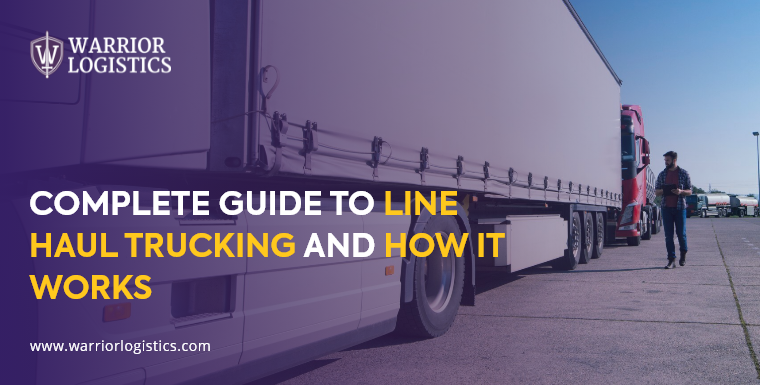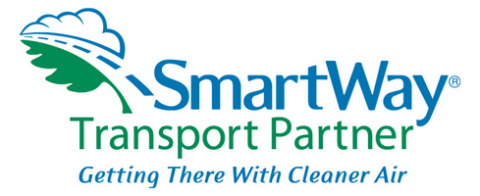Complete Guide to Line Haul Trucking and How It Works
In today’s fast-paced freight world, on-time delivery isn’t just a performance metric, it’s a promise that defines operational excellence. Behind that promise lies one of the most critical components of transportation: line haul trucking. For shippers, optimized linehaul operations translate directly into reduced dwell time, lower detention fees, and improved On-Time, In-Full (OTIF) metrics, all essential to maintaining service reliability and customer satisfaction.
At Warrior Logistics, our approach to line haul transportation is built around a metro-based strategy that minimizes variability between routes and terminals. This allows shippers to forecast more accurately, control costs more effectively, and ensure freight moves seamlessly between hubs, terminals, and destinations.
Let’s explore what makes linehaul operations the true backbone of modern logistics, and how a smarter, data-driven strategy delivers performance you can count on.
What Is Line Haul Trucking?
So, what is line haul trucking exactly? In logistics, “linehaul” refers to the movement of freight between two major points, usually distribution centers, terminals, or sorting hubs, without intermediate stops for pickups or deliveries. It’s the “main route” connecting supply chain nodes.
Unlike last-mile or local delivery, line haul in logistics focuses on long-distance routes that demand efficiency, coordination, and real-time communication. Whether it’s cross-state or cross-country, this process ensures goods move seamlessly within broader distribution networks.
In simple terms, line haul in logistics is the long-distance transportation of freight between key points in a supply chain. These are the backbone miles that make every just-in-time delivery possible.
Why Line Haul Trucking Matters in Modern Logistics?
With e-commerce and distribution volumes surging, line haul services have become more vital than ever. Every hour on the road counts toward meeting delivery windows and maintaining customer satisfaction. But beyond speed, linehaul trucking supports key performance goals for both shippers and carriers:
- Consistency: Predictable transit between major hubs ensures reliable lead times.
- Efficiency: Optimized routes reduce downtime and idle miles.
- Scalability: Supports expanding logistics operations across multiple regions.
- Visibility: Enables advanced tracking through connected telematics and data analytics.
At Warrior Logistics, we integrate these benefits through advanced line haul management systems, ensuring every mile is tracked, optimized, and backed by real-time visibility.
Line Haul Meaning: The Core Process Explained
To truly understand linehaul’s meaning, let’s break down the process.
- Freight Consolidation: Goods from multiple sources are gathered at origin terminals.
- Main Haul Transit: Freight moves via direct line haul routes to destination terminals.
- Deconsolidation: Shipments are sorted, scanned, and prepped for last-mile delivery.
This flow ensures freight is transported efficiently without unnecessary stops or delays. Each phase requires precision coordination, something Warrior’s line haul carrier network delivers through optimized route planning and real-time communication with dispatch teams.
What Vehicles Are Used for Line Haul Transportation?
Different cargo requires different types of line haul transportation vehicles. Common equipment includes:
- Dry Vans: For non-temperature-sensitive freight.
- Refrigerated Trailers: For perishable goods.
- Flatbeds: For oversized or irregular freight.
- Doubles or Triples: For parcel carriers handling high-volume shipments.
Warrior Logistics operates a modern fleet equipped for specialized line haul delivery, ensuring every load, whether time-sensitive or heavy-duty, arrives safely and on schedule.
Line Haul vs. Local Delivery: The Key Difference
A common question in logistics is the difference between line haul and local delivery. Local or last-mile delivery focuses on getting goods from distribution hubs to end customers, usually within short distances. Line haul trucking, however, moves shipments between terminals over long distances before they’re handed off for local delivery.
Think of it this way: If last-mile delivery is the sprint, line haul in logistics is the marathon that sets the pace.
At Warrior Logistics, both processes are seamlessly integrated. Our line haul optimization ensures upstream efficiency, while our last-mile coordination keeps customer satisfaction high.
Line Haul Rates and Cost Optimization
So, what is a line haul rate? It’s the cost associated with transporting freight between two terminals, typically calculated based on mileage, weight, and mode.
But price alone doesn’t define efficiency. Smart line haul management focuses on balancing rates with delivery performance. Warrior Logistics uses data-driven modeling and route analytics to identify cost-effective paths without compromising reliability.
Our philosophy: transparency first. Clients always know how line haul services are priced, tracked, and continuously optimized.
How Line Haul Visibility Improves Supply Chain Control
Modern logistics runs on information. Real-time line haul visibility allows shippers to monitor truck locations, estimated arrival times, and exception alerts, reducing uncertainty and improving coordination.
Warrior’s advanced visibility systems integrate GPS tracking, predictive analytics, and automated notifications. This end-to-end insight not only helps mitigate disruptions but also strengthens accountability across the supply chain.
In essence, better line haul visibility means smarter logistics decisions and faster responses when unexpected delays occur.
Direct Line Haul: The Shortcut to Efficiency
A direct line haul is when freight moves straight from origin to destination without any sorting or transfers. This minimizes handling, shortens transit time, and reduces the risk of damage.
While not always applicable, direct hauls are invaluable for high-priority shipments or time-sensitive deliveries. Warrior’s line haul services are designed to identify when direct routing yields better results and execute it through dependable carrier coordination.
Line Haul Optimization: Reducing Waste, Improving Reliability
Line haul optimization combines route planning, load balancing, and real-time analytics to improve performance. By leveraging predictive data, Warrior Logistics minimizes empty miles, consolidates compatible freight, and schedules routes that align with service-level goals.
Our line haul transportation strategy is simple: maximize truck utilization while ensuring every mile adds value. From automated scheduling to proactive exception management, every process reflects our commitment to Flexibility, Availability, and Reliability (F.A.R.), the foundation of Warrior Logistics.
The Role of Line Haul Carriers
A line haul carrier ensures timely, reliable freight movement between hubs. Choosing the right carrier isn’t just about capacity; it’s about trust, consistency, and safety standards.
At Warrior Logistics, our carrier partnerships are built on shared values of Extreme Ownership and Uncompromising Integrity. We manage both asset-based and brokered capacity solutions, giving clients the flexibility to scale operations and maintain performance even under peak demand.
Line Haul Services by Warrior Logistics
When it comes to line haul services, not all providers are equal. Warrior Logistics sets itself apart by combining advanced technology with operational expertise.
Our approach ensures:
- Predictable Freight Transit Times: Powered by data-driven scheduling.
- High-Capacity Flexibility: Through scalable asset-backed operations.
- Risk Mitigation: Proactive communication and safety-focused protocols.
- Cost Efficiency: Optimized routes and resource allocation.
Simply put, Warrior makes line haul trucking a competitive advantage, not just a logistics function.
3-Step Warrior Line Haul Management Process
- Analyze & Plan: We assess route networks, shipment frequency, and performance data to identify efficiency opportunities.
- Execute & Monitor: Real-time tracking and communication ensure transparency and accountability every mile.
- Optimize & Scale: Continuous improvements reduce costs, enhance speed, and adapt to client growth.
Our structured line haul management process ensures your freight arrives safely, consistently, and on time, every time.
Frequently Asked Questions
- How does line haul work?
Line haul trucking involves moving freight between major terminals or hubs without intermediate stops. It’s the backbone of regional and national shipping networks.
- What is the difference between linehaul and trucking?
Linehaul refers to long-distance routes between distribution centers, while trucking is the broader term covering all types of road freight movement.
- What vehicles are typically used for line haul?
Common vehicles include dry vans, reefers, flatbeds, and doubles, depending on the type of freight and distance.
- What is a line haul rate?
It’s the price charged for transporting freight between two hubs, often based on mileage, load weight, and service type.
- Which machine is used to haul?
Heavy-duty semi-trucks and tractors are used in line haul transportation, designed for long-distance durability and efficiency.
- What does line haul mean in logistics?
It means the scheduled long-distance movement of freight between origin and destination points, which is critical for network flow.
- Why is line haul visibility important?
It enables real-time tracking, predictive updates, and better decision-making when delays or route changes occur.
- How does Warrior Logistics handle line haul optimization?
Through advanced analytics, smart routing, and data transparency, Warrior reduces costs while improving freight reliability and speed.
Move Freight Smarter with Warrior Logistics
At Warrior Logistics, we don’t just handle freight; we optimize every mile of your journey. From line haul services to final delivery, our mission is to help businesses thrive with efficiency, transparency, and trust.
Partner with Warrior today, experience precision line haul transportation built for modern logistics!



